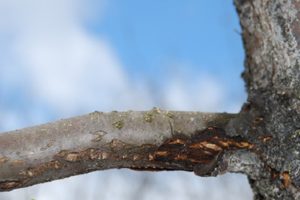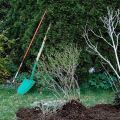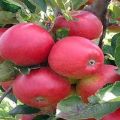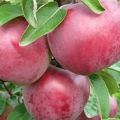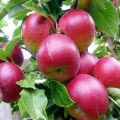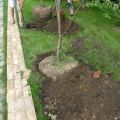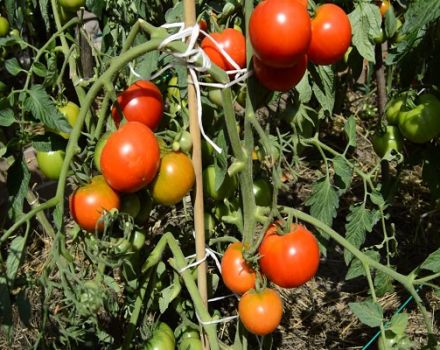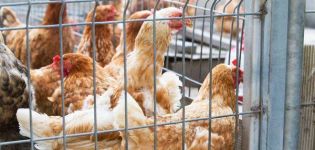The best and new varieties of columnar apple trees for the Moscow region with a description
Columnar apple trees save space on the site, shorten the time until the first harvest, and simplify maintenance. For horticultural farms, they are a real find, but not all varieties are suitable for growing in the Moscow region. Columnar apple varieties for the Moscow region must meet the following requirements - resistance to frost, humidity, disease, high adaptability.
Climatic characteristics of the Moscow region
The temperate continental climate of central Russia, to which the Moscow region belongs, is distinguished by severe winters, hot summers, and prolonged rainy seasons. In different directions from the capital hail, the average annual seasonal temperatures can vary by several degrees.
The climate of the Moscow region in different directions has some differences:
- In the northwest, it is closer to Tverskoy.
- In the north-east towards Yaroslavsky.
- In the east to Vladimirsky.
- In the southeast towards Ryazan.
- In the south - Tula.
- In the southwest - Kaluga.
- In the west - Smolensk.
The capital is located in the center of the Moscow Region, where climatic conditions can be considered average, but when planting and caring for fruit trees, you will have to focus on the climate of a particular area. The southeast of the region has the most severe winters and high summer temperatures.

The landscape of the region is flat, only in the western direction there are hills that rise to a maximum of 160 m.Accordingly, the soils in different parts of the Moscow region are also strikingly different from each other, which must be taken into account at the stage of preparing the site for planting apple trees, as well as the fact that the fertility of Moscow lands they do not differ.
What is the advantage of columnar apple trees for this region
Considering the fact that partly cloudy and cloudy summer weather is typical for the regions of the region, apple trees with thickened crowns do not always have enough sunshine for apples to pick up sugars. Columnar apple trees do not hide fruits with foliage, each apple receives its portion of heat and light in full.
Despite the relatively short period of fruiting, the best varieties of the columnar type near Moscow begin to bear fruit as early as the next season after planting, by the fifth season they already give the maximum possible yield for a particular variety.
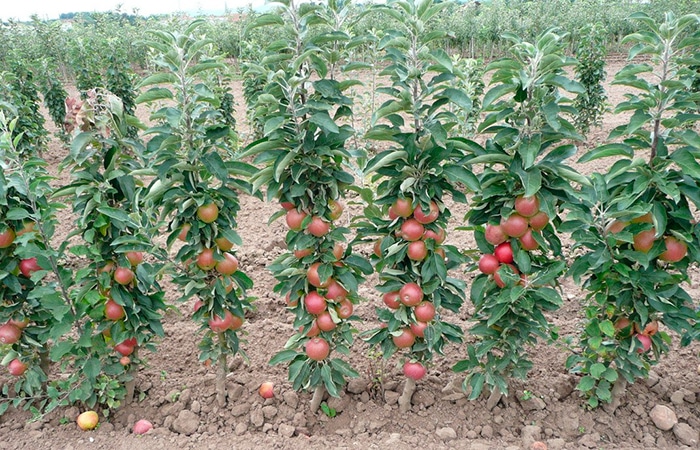
In a relatively small area, columnar apple trees can be placed at a distance of 80 cm from each other, they will not shade neighboring plants, because this type of plants does not have skeletal branches.
Colonial apple trees have high immunity to many diseases, but not the highest frost resistance, which is compensated by their low height, which allows the plants to be completely covered by winter.
The small size of the plant also lies in the convenience of harvesting and carrying out preventive and therapeutic spraying.
Types and characteristics of varieties
Every year, thanks to folk and professional selection, new varieties of columnar apple trees appear for growing in the Moscow region.
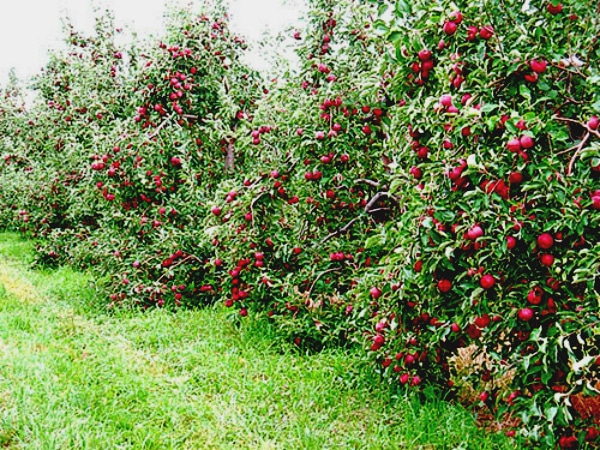
When breeding varieties, scientists set themselves different tasks:
- increased productivity;
- resistance to disease and frost;
- acceleration of maturation;
- getting stale fruits that are not afraid of transportation;
- improved taste.
Each variety has its own characteristics, including the timing of the growing season, harvesting. Conventionally, all columnar apple trees can be divided into three large categories - summer, autumn and winter.
Summer
This category includes varieties with ripening dates from mid-July to 19 August. Fruits of this category are not intended for long-term storage, their flesh is loose or medium friability, and high sugar content.
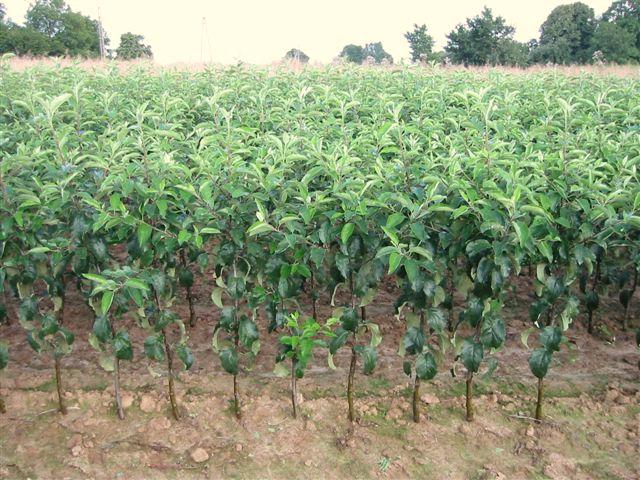
Nectar
The height of the tree is 2 m, the trunk with foliage and fruits does not exceed 30 cm in diameter. Until the maximum height is reached, the seedling is annually stretched by 10-15 cm. The alternation of fruit-bearing areas ensures the regularity of the harvest from year to year. Up to 15 kg of marketable fruits are removed from an adult plant with a high tasting rating, obtained for a pleasant honey aroma and taste.
The disease resistance of this variety is equated to tall apple trees.
Baby
The apple tree, bred in Canada, rarely exceeds 180 cm in height. The fruits are large (up to 250 g), green with a pinkish blush. At the age of 5 years, the tree reaches its maximum endurance, gives 13-15 kg of juicy, aromatic, sweet and sour apples annually. The variety is demanding for proper care. In its absence, fruits from this variety of apple trees cannot be obtained.
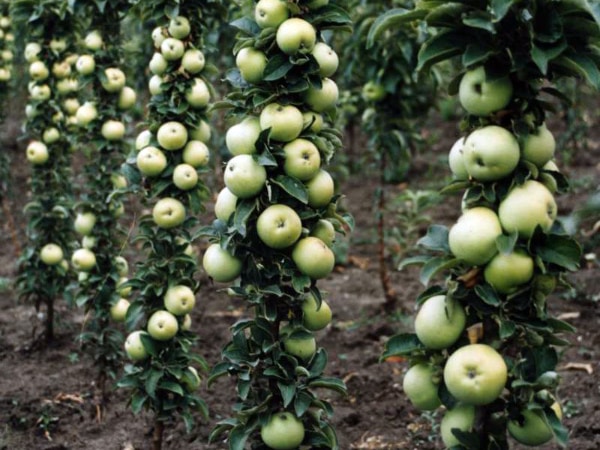
Vasyugan
The variety was bred in 1987 in Russia, its ringlets are quite hardy, just like the trunk, literally entwined with fruits. The sizes of the fruits cannot be called uniform, the weight of apples varies from 100 to 200 g. Dense grainy sweet-sour pulp and high aesthetic characteristics of the plant make the frost-resistant Vasyugan apple tree a desirable planting on a site in the Moscow region.
Slightly elongated pink fruits with blurred red stripes decorate the garden and fill it with aroma. The maximum plant height is 3 m, the columnar structure of the crown is achieved using typical pruning.
Autumn
Autumn varieties include columnar apple trees of medium ripening periods - from the last decade of August to mid-September.
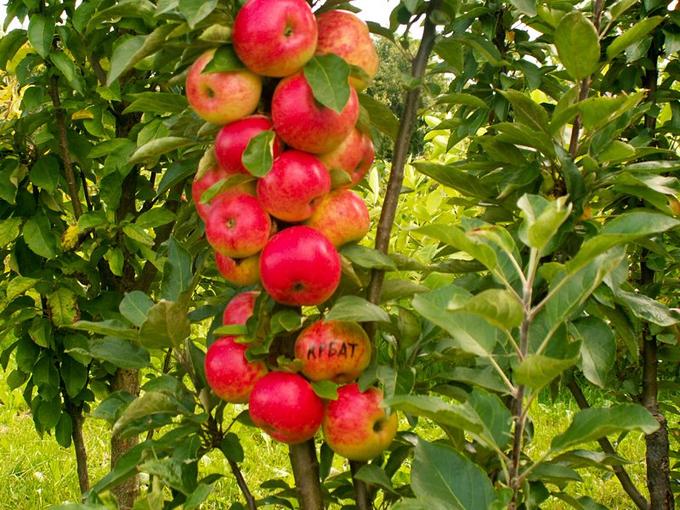
Titania
During the planting season, up to 1 kg of apples can be removed from a young tree, but more often the apple tree begins to bear fruit in the 3rd season. 8-10 kg of fruits are removed from one adult plant. Differs in a high degree of regeneration after frostbite.
Gin
Typical columnar variety with bright apples that appear in the first season. The main advantage of this variety among equals is its high frost resistance.
Winter
Ripening winter varieties of apples in the Moscow region falls in the last decade of September - mid-October. Collect them at the stage of technical maturity for storage. Fruits of winter varieties often decorate the New Year's table, delighting the owners with the unsurpassed taste of summer
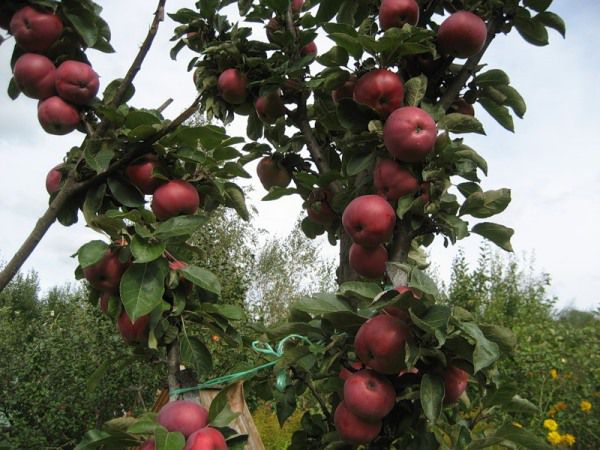
Currency
Apples of this variety are different in size and weight (from 100 to 250 g). The frost resistance of the variety is such that it can be grown even in Siberia. In the Moscow region, fruits ripen in the last decade of October.
Moscow necklace
Fruits are even, red, of medium size with a weight of 110-120 g. Harvesting takes place in mid-September, but marketable and taste qualities remain until the end of February.
The president
In terms of frost resistance, this variety is not inferior to Antonovka, despite the fact that the fruits are removed from it about a month earlier.
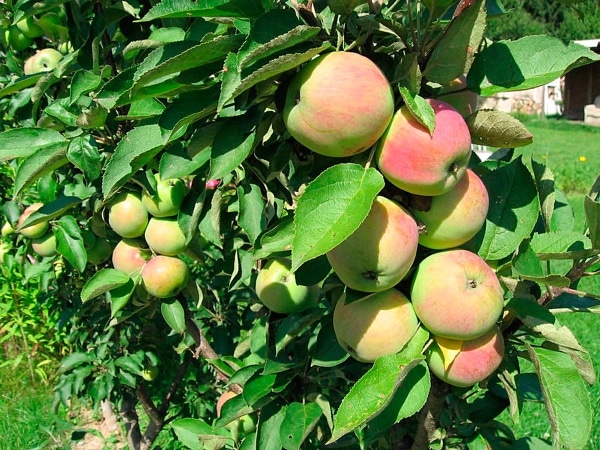
Amber necklace
The variability in the size of the tree depends on the type of rootstock chosen - dwarf, semi-dwarf, vigorous. The minimum height is 1.5 m, the maximum is 3.5. Columnar apple trees are grown on dwarf and semi-dwarf rootstocks. By the age of 5, the plant reaches its growth limit, gaining strength for full fruiting. Up to 17 years old, you can take off 15-20 kg of crispy, juicy apples annually from it.
How to plant and grow an apple tree
Planting apple trees in the suburbs falls in the second half of October and the end of April. Regardless of the season chosen for planting, the planting hole is prepared for a seedling in the fall. Cultivation of an apple tree, crown formation, and fruiting depend on the rooting of the plant and its adaptability. Given the close location of the roots to the soil surface, it is better to choose spring planting for columnar varieties. Over the summer, the seedling will take root and gain strength for not the mildest wintering.
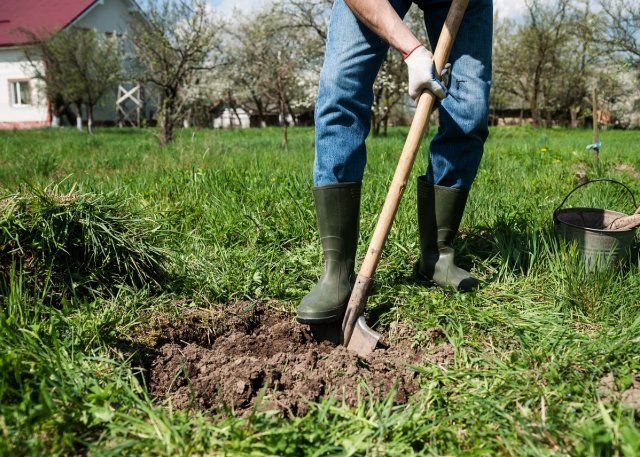
Landing dates
Planting works in the northwest and southeast of the region may differ from the average statistical time in the Moscow region by 1-2 weeks.
Spring
The following factors will become a guideline for planting an apple tree:
- complete snow melt;
- establishment of positive air temperatures during the day and at night for at least a week;
- melt water descent, soil drying.
Fall
When planting in autumn, it is necessary to focus on the average indicators. It is necessary to plant a seedling 2 weeks before the onset of frost, not later!
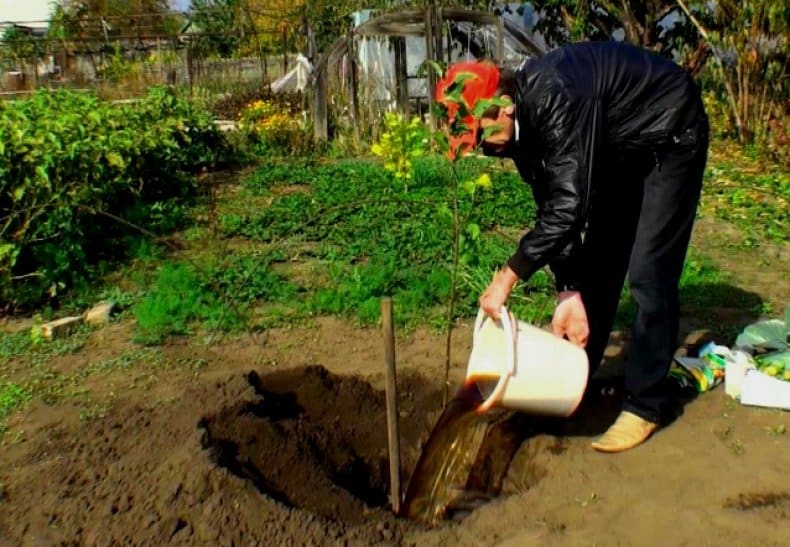
Preparation of seedlings
After purchasing the seedling, it is necessary to dig in on the site so that it gets used to the new conditions - the climate, the characteristics of the soil. Before planting the rhizomes of seedlings with a not very branched open root system, it is recommended to soak for 12 hours in water with a growth activator dissolved in it. This will help the plant to take root and grow faster.
Required soil composition
The soil should be saturated with minerals that provide organic fertilizers - manure, humus, humus. Nitrogen-containing fertilizers are not used for autumn planting, but the soil can be improved with potash and phosphorus complex foliar dressings, hidden under a layer of ordinary soil.
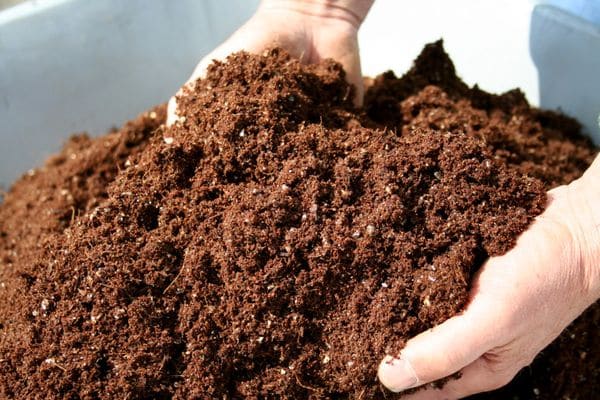
Seating chart and pit depth
A distance of 80-100 cm is maintained between the columnar apple trees, the same distance should be between the rows. The recommended width and depth of the planting hole is 80 cm. One third of it is filled with broken brick or other material that creates a drainage layer. Another third of the space will be needed for soil enriched with a mineral-organic composition.
Young growth care
Until the plant reaches 5 years of age, planned pruning is carried out in spring and autumn, which is necessary for crown formation and planning the next year's harvest.

Watering
The soil is moistened at least 4 times a season:
- Before flowering.
- During the formation of ovaries.
- At the time of the apple juice set.
- At the stage of preparing the tree for winter.
For most plants, this is sufficient. Abundant watering is necessary on soils that retain moisture, but is useless on sandstones that let water pass through a sieve. On such soils, apple trees need to be watered in small doses, but regularly, about once a week.
Fertilizer
At the initial stage of vegetation, the apple tree needs nitrogen, it is applied twice - before flowering and at the stage of ovary formation. When fruits ripen, the tree requires phosphorus and potassium, they are applied as root and foliar dressings.
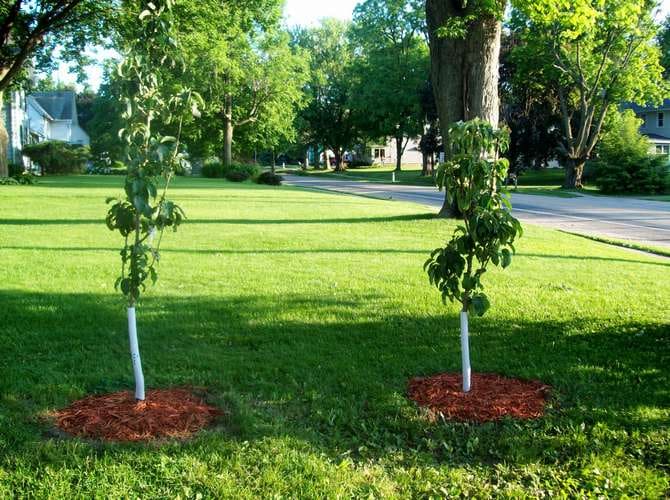
Treatment against pests and infections
Universal insecticides will help prevent fungal infections of the apple tree and protect the garden from the invasion of insect pests of fruit trees. The first treatment is carried out along the bare trunk, before bud break, the second (with a less saturated solution) at the time of fruit setting.
Formation of the correct crown
With planned autumn pruning, the growths are shortened so that no more than 2 fruit buds remain on each ringlet. Spring pruning will help correct the crown; at this stage, weak and frozen shoots are removed from the tree.
Shelter for the winter
It is not difficult to pack small trees in a plastic sleeve and tie them so that the air gap inside it protects the plant from contact with the frosty air of the environment. If necessary, burlap and a second layer of polyethylene are put on over the sleeve. The root system is protected with a 10-15 cm layer of mulch mixed with peat.

